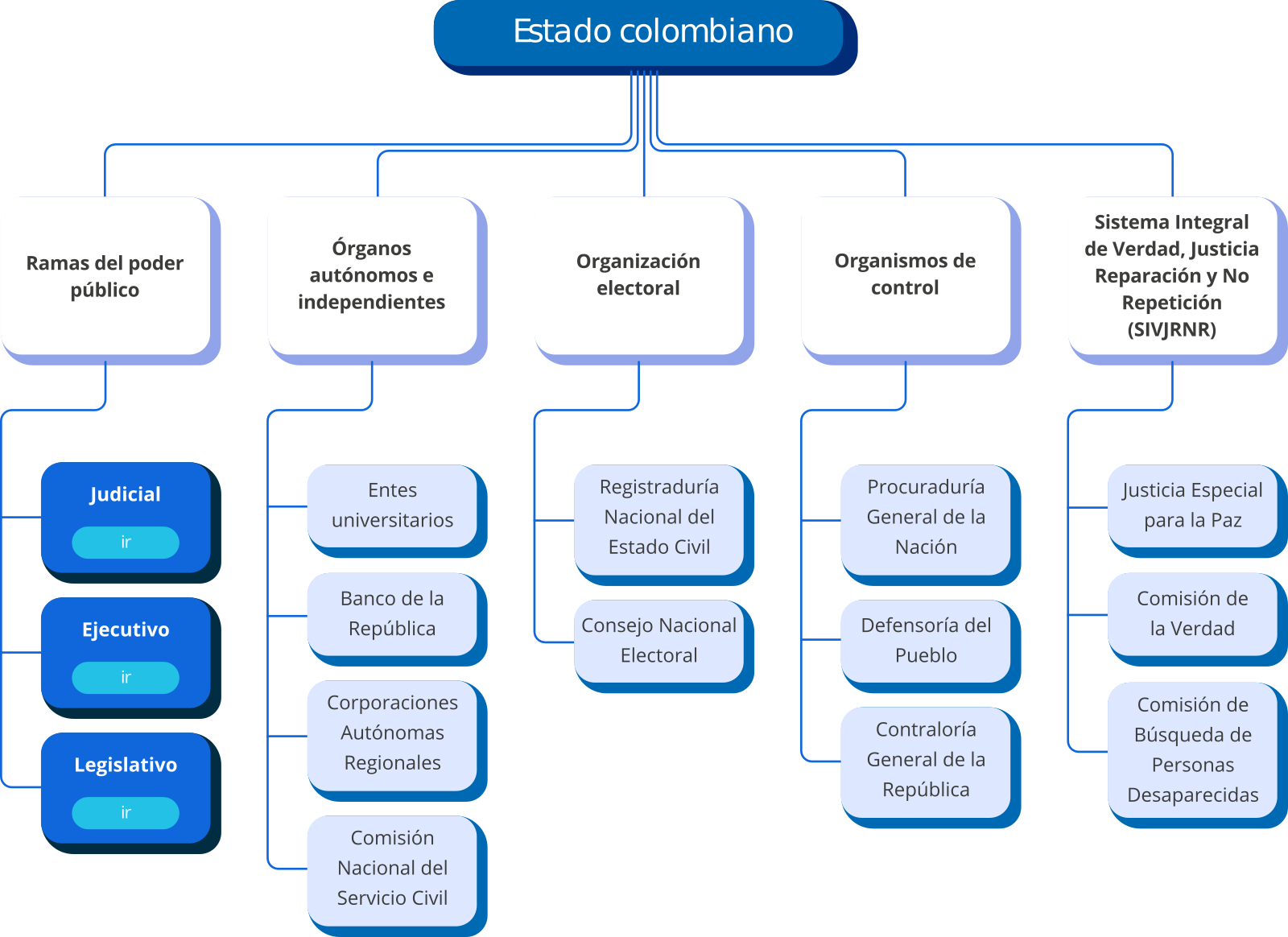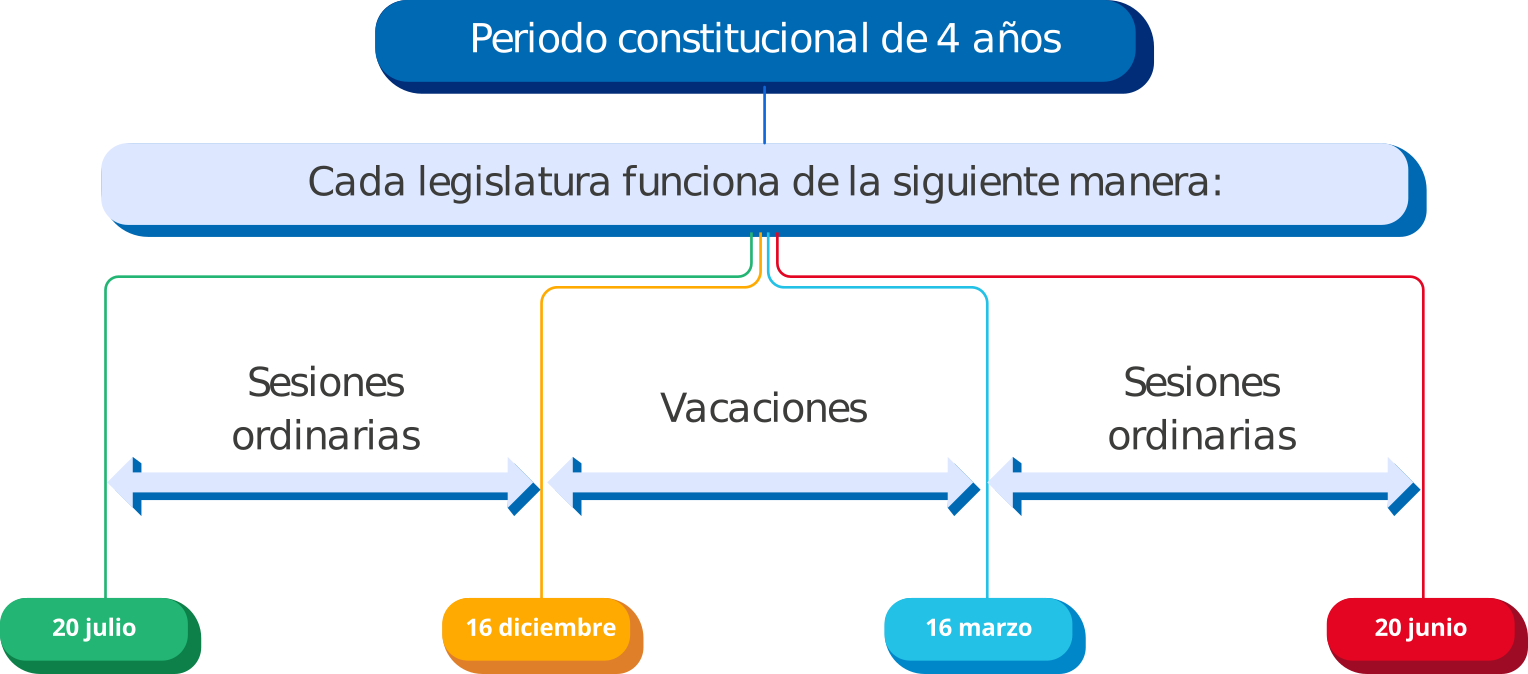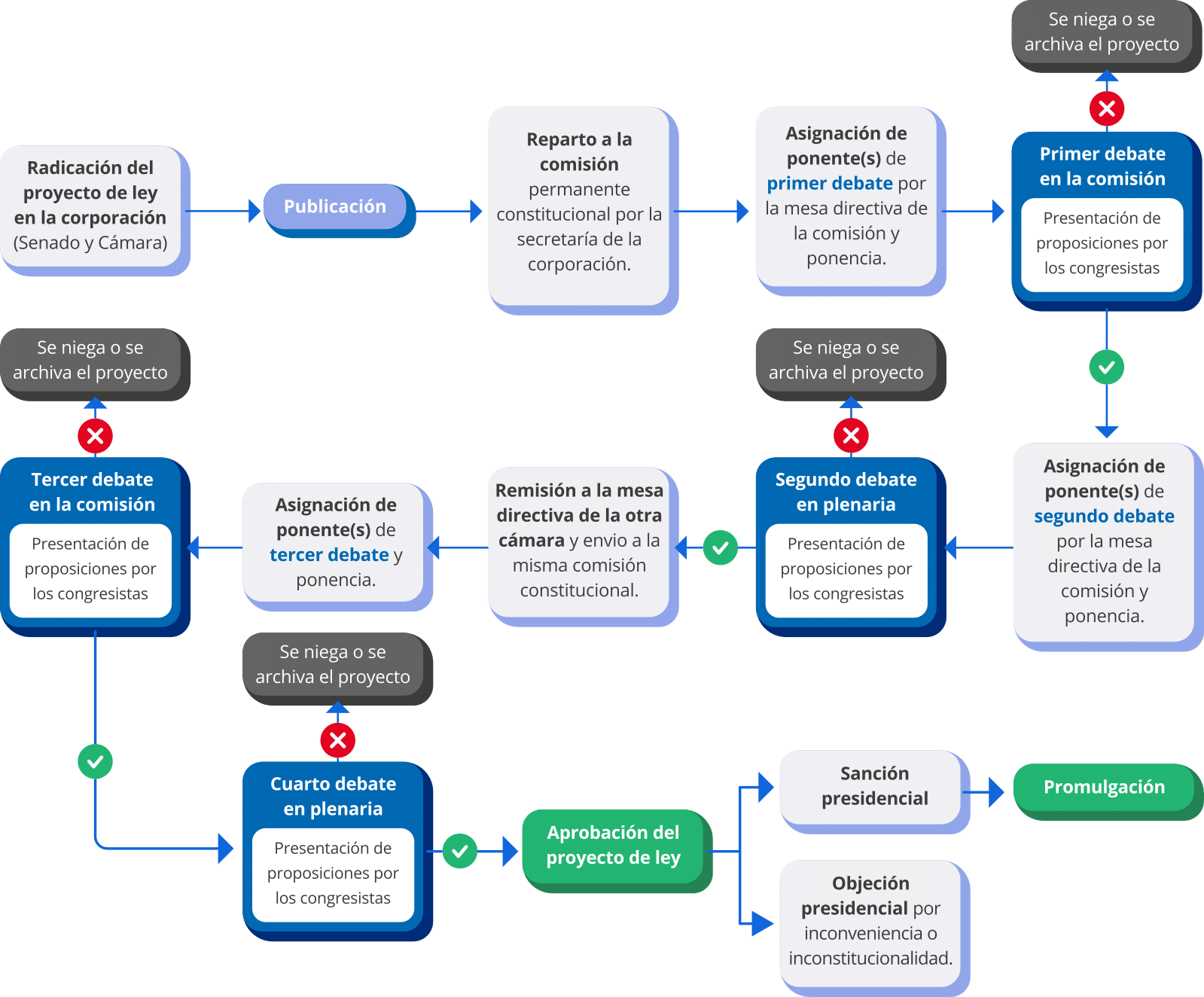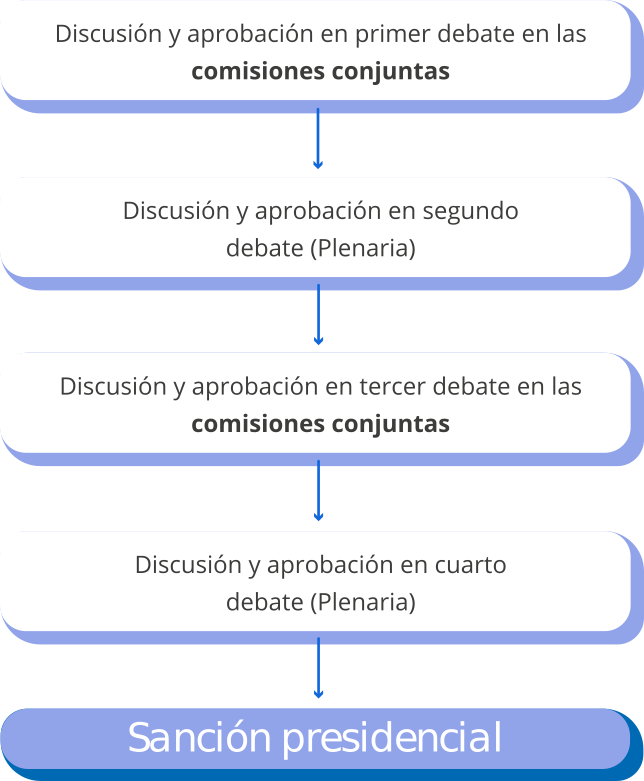LEARNING FROM THE COLOMBIAN EDUCATION SYSTEM AND ITS NORMS
This is a guide to understanding key aspects of the education system and the rules that regulate it
To better understand Colombia's education system and its regulations, four main topics must be examined:
Structure of the Educational System
Ministry of National Education (MEN)
This entity is the head of the education sector and its most visible dependency. Currently, it is in charge of the following tasks:

Frame policies for the education sector and dictate standards for the delivery of services.

Finance, co-finance and evaluate investment programs, plans and projects with resources other than those of the General System of Participations (SGP).

Establish curricular and pedagogical standards without prejudice to the autonomy of educational institutions.

Regulate the contests that apply for the teaching career.

Provide technical and administrative assistance to territorial entities.

Distribute the General System of Participations (SGP)’s resourcesfor education.
Certified Secretariats of Education
In Colombia there are 97 Certified Secretariats of Education. These are public entities linked to governors or mayors that are responsible for managing and providing educational services at the territorial level.
According to Law 715 of 2001, in order for there to be a Certified Ministry of Education in a territory, it must be recognized as a Certified Territorial Entity (ETC):

The Certified Secretariats of Education are responsible for the following tasks:

Government Branches
The Colombian State is made of five pillars:
Agencies
This section focuses on the dynamics of the government brancges, which were reconfigured by mandate of the 1991 Political Constitution, which assigned specific functions to each one and separated their powers within the state.
Pillars of the Colombian State

Judicial Branch
It is in charge of administering justice, protecting rights, and resolving conflicts between people based on the law. Its decisions are embodied in judgments, concepts or orders. Such decisions, especially judgments, can regulate, define or clarify matters relevant to the education sector in a definitive way.
regarding the education sector.
Legislative Branch
It is responsible for promulgating the laws that govern the national territory. Its only body is the Congress of the Republic, which is made up of the House of Representatives and the Senate.
102
Senate
188
House of Representatives
Congress of the Republic
It is the only one that can enact regulations with legal force in Colombia (except in some cases in which the president can also do so). Congress operates in ordinary sessions between July 20th and December 16th and between March 16th and June 20th. This period is known as the legislature. It is important to bear in mind that a constitutional term consists of four legislatures.

Senate
This corporation is made up of representatives from all over the national territory, divided as follows:
102
Senators elected by citizens from across the country
5
Senators established by the Peace Agreement
1
Seat assigned to the second most voted presidential ticket
House of Representatives
This corporation consists of 162 seats occupied by representatives from all over the national territory, divided as follows:
16
Peace Circumscriptions
2
Afro-descendant communities
1
Indigenous communities
1
Representative of Colombians Abroad
1
Second most voted vice-presidential ticket
5
Representatives of the Peace Agreement
At least 2 for each territorial jurisdiction according to the number of inhabitants of each department and Bogotá
Constitutional Commissions
The Constitution establishes that Congress must meet in permanent commissions. The Senate and House have seven independent commissions each, and all members of Congress must belong to one of them. Each of the seven commissions focuses on specific themes. Four of them are particularly relevant to education issues: the First, Third, Fourth and Sixth Commissions.

In short, the legislative branch has the power to transform the national regulatory framework and therefore, to adjust the playing field to promote improvements in the country’s education.
To consult the relevant legislative initiatives regarding the education sector, you can go to: legislative initiatives
Executive Branch
It is responsible for administering the State, i.e., enforcing the law, ensuring security and citizen coexistence, collecting taxes and providing public services (including the education service). Its head is the President of the Republic, who acts as chief of the National Government. At the territorial level it is made up of the following entities: mayors’ offices, councils, assemblies and governorships.
Although the Executive Branch is made up of several entities, the following graph shows those that are especially relevant in the field of education:

Affiliated entity: is an organization or entity that is under the supervision and control of another State entity, usually a Ministry, but that has a certain autonomy in decision-making and management of its resources. They have a hierarchical and controlling relationship with the state.
Related entity: is an entity that has a relationship of cooperation or collaboration in the execution of public policies or in the fulfillment of a specific state function.
Both affiliated entities and related entities are subject to the regulations and supervision of state control bodies in Colombia.
Regulatory System

A legal system sets out the playing field in a society, which can be formal or informal. In the Colombian normative framework, formal rules are expressed as norms that include the Constitution, laws, decrees, circulars, resolutions and other instruments that guide the actions of bodies, institutions, citizens and society.
Las normas responden a una jerarquía:
 |
Political Constitution and International Human Rights Treaties |
 |
 |
Laws and decree laws | |
 |
Ordinary Decrees | |
 |
Resolutions | |
 |
Directives and circulars |
Definitions of important terms to understand the legal system:

Legislative procedures
A legal system sets out the playing field in a society, which can be formal or informal. In the Colombian normative framework, formal rules are expressed as norms that include the Constitution, laws, decrees, circulars, resolutions and other instruments that guide the actions of bodies, institutions, citizens and society.

The regulatory framework that guides the Colombian education system has three ways of renewing itself: by creating new standards, modifying them or repealing them.
The changes or creation of the national regulatory framework occur after a process called the legislative process, through two types of legislative initiatives:
Legislative process for a bill to become part of the regulatory framework
First, they must be filed with one of the corporations (House or Senate). Then, the secretariat of the corporation assigns to each project a Constitutional Commission according to its theme. Finally, they must go through four debates, two in each corporation.
The following graph shows the different processes that a bill must go through to become a law or decree law, and all the instances where it can fail.


A bill becomes a law or decree law when it passes four debates and is approved by the required majorities. However, if the text adopted in one plenary is different from the one adopted in the other, a new debate must take place. In this fifth debate, a conciliation commission, made up of an equal number of senators and representatives, presents a report with the final text that it recommends be approved as a law of the Republic.

Conversely, it does not become law or decree when it is filed or withdrawn. The former occurs when it does not obtain the required majorities and the latter when the author decides to withdraw it at some point in the process.
Exceptions to the legislative process in bills
In very special cases, the process of approving bills can be expedited by processing through joint constitutional committees. These are created when the commissions of each corporation in charge of the same subject meet. For example, when the Sixth Committee of the Senate and the Sixth Committee of the House, in charge of education, meet to discuss a legislative initiative.
This procedure can be presented by two types of provision:

The legislative procedure for drafting legislative acts
Although legislative bills can begin their processing in either of the two corporations (House or Senate), like bills, the former are only studied in the first committees and must be discussed in a single legislature. These projects go through two rounds: a first period of four debates and a second period of another four.
In the first round, the legislative act draft must be approved by a simple majority, while in the second round, approval must be given by an absolute majority.

A simple majority is obtained when it is approved by a majority of the members of Congress present in the room. In contrast, an absolute majority is obtained when more than half plus one (+1) of all congress members approve it.


